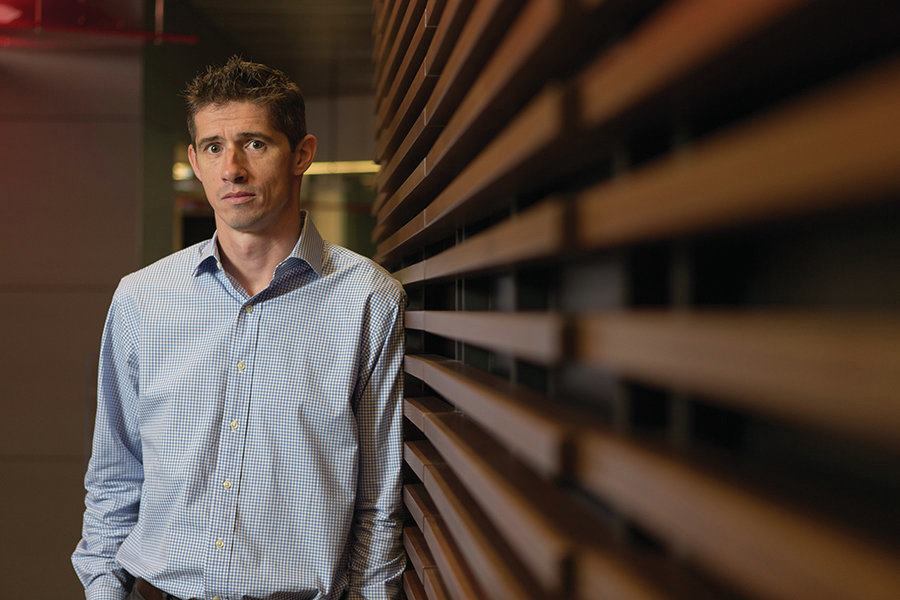Matt Williams is an associate principal at Arup, where he serves as the firm’s Los Angeles–based Façade Practice leader. His work on the Sainsbury Laboratory at Cambridge University, which received the 2012 RIBA Stirling Prize, integrates building performance and design to ensure optimal working conditions for scientists and technicians. “I don’t think of a façade as just a ‘skin’ that wraps around a building,” he says, “I think of it as the first 5 or 6 feet of the building—it has an influence on what happens inside and outside.”
Our façades practice grew out of Arup’s Research and Development group, which started doing specialty façade work in the 1980s. About four or five years ago, we began integrating the façades practice into the buildings group globally. Ideally, every Arup building project should have access to a façade engineer.
Building types and building geography have a major influence on each design. That’s a key thing we investigate first before looking for a prescriptive approach. A building design that is very energy efficient in one location may not translate well to another location, or from residential to commercial. We have guidelines, sure, but the performance-based approach has taken a huge lead in our practice.
The Sainsbury’s laboratory was very challenging, even though it looks simple. Laboratories are energy-intensive, and a huge amount of effort went into how the interior spaces are lit. The client wanted to encourage world-class scientists to move to Cambridge, and one way to do so was to offer a collaborative, adaptable environment so they could have ad hoc meetings, eat together, and work together. They wanted scientists to meet up in these breakout spaces along the west elevation of that building, which meant striking a delicate balance between maximizing daylight into the social spaces while mitigating the high solar gains. It’s about how users influence the space, and that conversation is held over a set of iterations that can offer useful comparisons to reach an optimum solution.
A façade has to have an integrated approach, as it encompasses such a broad range of skills and disciplines, from mechanical systems to materials. When I worked with Arup in London, we’d start with a few standard approaches—a façade system or cladding type—but in the last five to 10 years what we’ve termed “building envelope physics” has become a more dominant factor in the early design phase by informing the energy efficiency of buildings. And we have that conversation with other engineers about things like integration and holistic solutions.
In the end—and in the beginning, frankly—the understanding of how a façade works depends on the people you work with. It’s about the quality of that collaboration. —As told to William Richards
